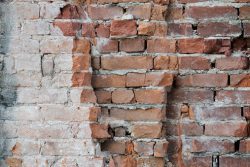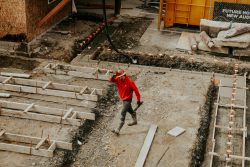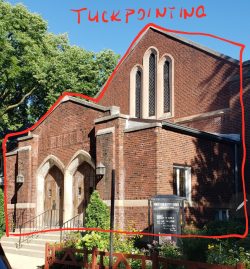Don’t Let Tuckpointing Threaten the Strength of Your Chicago Home
Maintaining your home’s tuckpointing and masonry is a vital part of homeownership in Chicago.
Masonry walls are made of bricks, stones, or concrete blocks held together by mortar. Mortar is a type of cement that is used to bind bricks or stones together.
Over time, the mortar can break down and crumble, which can cause the masonry to become unstable. Tuckpointing is the process that involves removing the old mortar and replacing it with new mortar.
As a homeowner or a building owner, it’s important to know when your building needs tuckpointing.
Let’s dive more into the importance of tuckpointing, signs your building needs tuckpointing, and when to call a professional.
What Is Tuckpointing?
Tuckpointing is the process of renewing the pointing, or sealant, between bricks or other masonry units. It is necessary to maintain the structural integrity and appearance of brick buildings.
It is important to use a mortar that matches the original material as closely as possible to maintain the strength and integrity of the building.
Over time, the pointing between bricks can erode due to weathering and other environmental factors. This can cause the bricks to become loose and eventually fall out, leaving gaps in the wall.
Tuckpointing helps to prevent this by restoring the pointing, which keeps the bricks securely in place.
It’s also one of the most expensive home repairs.
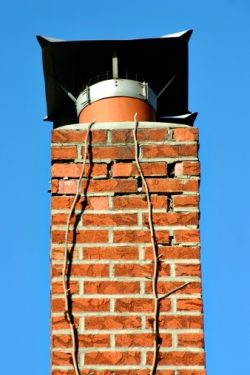
Why Is Tuckpointing Important?
Tuckpointing is important because it helps to prevent water from seeping into the cracks causing damage to the bricks. Tuckpointing also helps to improve the brickwork’s appearance and revitalize the building’s appearance.
In most cases, it involves grinding out mortar from masonry walls and replacing them with new mortar. The process is very time-consuming and labor-intensive. To avoid high costs, we recommend annual building inspections so you can fix the problem as soon as it is discovered.
Related: 7 Tips For Hiring The Best Chicago Home Renovation Contractor
3 Main Benefits Of Tuckpointing
1. Tuckpointing prevents water damage: Water can cause severe damage to bricks, but tuckpointing helps to seal the cracks and prevent water from seeping in.
2. Improves appearance: Tuckpointing can make old, worn-out brickwork look new again.
3. Tuckpointing strengthens the structure: By filling in the cracks, tuckpointing reinforces the overall structure of the brickwork or other masonry units.
Difference Between Tuckpointing vs. Repointing
There is often confusion about the difference between repointing and tuckpointing. Although both terms are used interchangeably, they do represent different services.
Repointing is the process of removing old, worn mortar from between bricks or stones and replacing it with new mortar.
Tuckpointing is the process of adding new mortar to fill in cracks or gaps in existing mortar joints.
The main difference between repointing and tuckpointing is the depth of the repair. Repointing involves removing old mortar to a depth of 1/2 inch to 3/4 inch, while tuckpointing only consists in filling in gaps or cracks on the surface of the mortar joint. This means that tuckpointing is a much less invasive repair than repointing.
4 Signs Your Chicago Home Needs Tuckpointing Work
Knowing the warning signs that your home needs tuckpointing work is important and could save you money. Below are the 3 most common signs that your Chicago home needs tuckpointing.
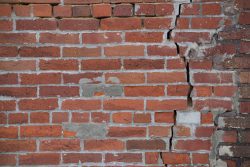
1. You can see cracks or gaps in the mortar between bricks.
The crumbling or missing mortar between bricks is due to the process of weathering. Weathering is the breakdown of rocks, minerals, and organic matter at the surface of the earth. It is caused by the action of wind, water, and ice. The process of weathering can be divided into two types: physical weathering and chemical weathering. Physical weathering is the mechanical breakdown of rock by the action of wind, water, and ice. This process can also be referred to as spalling. Chemical weathering is the erosion or disintegration of rocks and building materials caused by chemical reactions with water and other substances.
2. Bricks Falling Out
Bricks falling out of your wall may be due to the fact that the mortar between the bricks has eroded over time. This can happen when the wall is exposed to moisture, either from rain or the humidity in the air. The mortar acts as glue to hold the bricks together, so when it breaks down, the bricks can fall out from your wall.
3. Water Damage
Water damage to brick or other masonry structures can occur when water seeps into the crack, holes, or pores of the bricks and then freezes. This can cause the bricks or blocks to crack or crumble. Water damage can also occur when bricks are exposed to high levels of moisture, such as during a flood.
4. Efflorescence
Efflorescence is a white powder that you might see on the outside of a building. It happens when water seeps through cracks in the building and dissolves minerals in the bricks or mortar. Then, when the water evaporates, it leaves behind the minerals, which form a powdery white deposit on the surface of the building. Over time they can major damage the building.
When To Call A Chicago Tuckpointing Professional?
When the mortar between your bricks start to crack and crumble, it’s time to call a tuckpointing professional. It’s crucial to repair these joints as soon as possible to prevent water damage and further deterioration of your brickwork.
A tuckpointing professional will assess the damage and then match the new mortar to the existing color. They will then carefully remove the old mortar and replace it with new mortar.
Tuckpointing is a delicate process, so it’s important to hire a professional with experience with this type of repair. They will know how to properly mix the new mortar and apply it to look seamless and last for many years.
Related: 10 Useful Tips For Hiring The Best Chicago Roofing Contractor
How Often Should Tuckpointing Be Done For Your Chicago Home?
Quick Answer: 10 – 15 Years
The frequency of tuckpointing depends on several factors, such as the age of the building, the weather conditions in your area, and whether the original mortar was mixed correctly.
The age of the building is also a factor to consider when deciding how often to tuckpoint. Older buildings were not built with modern techniques and materials, so they require more maintenance. If you have a newer building, you may be able to go longer between tuckpointing jobs.
Conclusion
Tuckpointing is important in maintaining your home’s structural integrity and curb appeal.
If you notice any of the following signs on your brick walls, it’s time to call a professional for tuckpointing:
- Gaps or cracks
- Crumbling mortar
- Loose bricks
- Water infiltration.
Don’t wait until your bricks are in dire need of repair – schedule tuckpointing services at the first sign of trouble to keep your home or building safe and looking its best.
Look no further if your Chicago home needs tuckpointing or masonry services! (we also serve Chicago’s surrounding suburbs)
Water damage is a serious issue that can lead to even more expensive repairs.
We’re experts in the field and can get the job done quickly.
